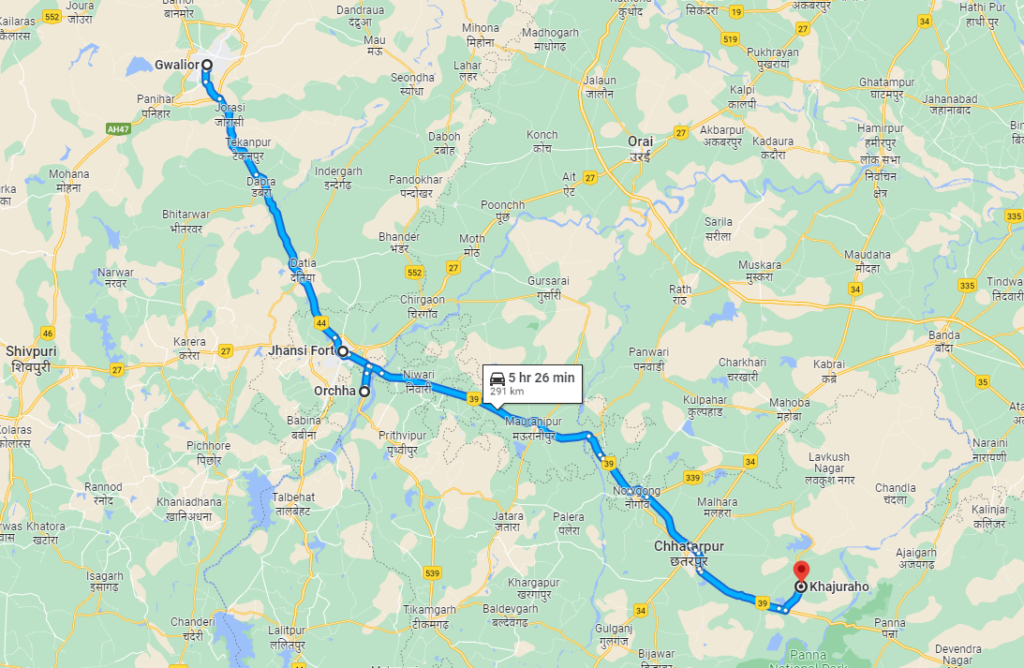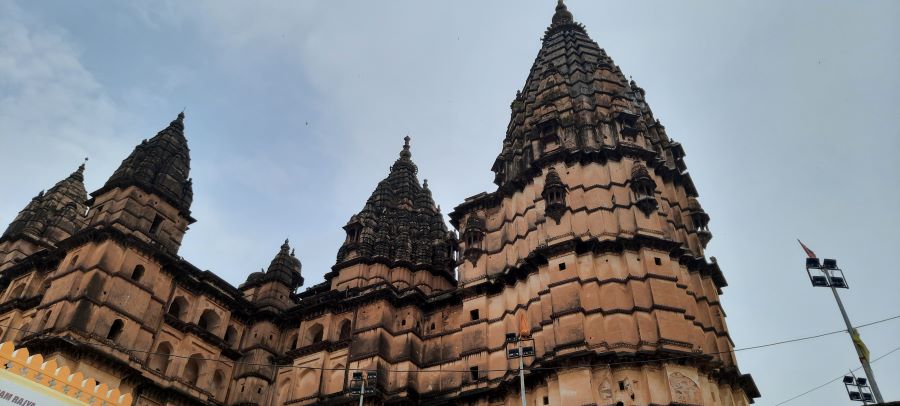Table of Contents
The sun had just begun to cast its golden rays upon the city of Gwalior as we embarked on a day of exploration and adventure. Our destination: the historically rich and culturally vibrant towns of Jhansi and Orchha. We started our road trip from Gwalior, setting the stage for a day filled with history, architecture, and the essence of India.
Morning in Gwalior: The Beginning of an Expedition
Our day started early, well before the bustle of the city set in. With a sense of excitement and curiosity, we started our road trip from Gwalior. The anticipation of what lay ahead made the journey itself a thrilling experience. The car chugged along, carrying us towards our first destination, Jhansi.

Our journey through Central India seamlessly blended history, architecture, and natural beauty, all linked by the roads before us.
Starting from Gwalior, the 102-kilometer road to Jhansi whispered tales of rural landscapes and heroic legends.
From Jhansi, a short 16-kilometer drive led us to Orchha, where architectural marvels and intriguing history beckoned.
Finally, the 180-kilometer journey from Orchha to Khajuraho showcased Central India’s diverse landscapes, from farmlands to dense forests, and small towns.
| Journey Stage | Distance Traveled (Approx.) | Highlights |
|---|---|---|
| Gwalior to Jhansi | 102 kilometers | Rural landscapes, Jhansi’s history |
| Jhansi to Orchha | 16 kilometers | Orchha’s architectural wonders |
| Orchha to Khajuraho | 180 kilometers | Diverse landscapes of Central India |
Jhansi: Exploring the Heroic Legacy
As we disembarked at Jhansi, it was impossible not to feel the weight of history surrounding us. Jhansi is renowned for its role in the First War of Independence in 1857, and its tales of valor and bravery still echo through its streets.
Our first stop was the Jhansi Fort, a formidable structure that played a pivotal role in the Indian Rebellion of 1857. As we explored its passages, our guide narrated the stories of Rani Lakshmibai, the warrior queen of Jhansi, who fiercely defended her kingdom against the British. The echoes of history were palpable within the fort’s walls, reminding us of the indomitable spirit of those who had once walked these same paths.
Orchha: A Glimpse into Medieval Splendor
Our journey through Orchha was a fascinating exploration of a town steeped in historical significance. Orchha, nestled beside the tranquil Betwa River, is a treasure trove of stunning temples, palaces, and chhatris (cenotaphs). In this section, we’ll delve into three remarkable sites, each with its own unique story.
The Orchha Fort: A Marvel of Architecture and History
Our first stop in Orchha was the magnificent Orchha Fort, an architectural wonder that stands as a testimony to the town’s glorious past. The fort is a mesmerizing blend of Rajput and Mughal architecture, and its grandeur is only surpassed by the breathtaking views it offers of the serene surroundings.
The Orchha Fort, built by the Bundela Rajput chieftain Rudra Pratap in the 16th century, was strategically perched on an island formed by the confluence of the Betwa River. As we explored its various palaces, courtyards, and temples, we marveled at the intricate frescoes that adorned its walls. Each fresco told a story of the town’s rich heritage, a narrative of valor, culture, and architectural finesse.
The Raja Ram Temple: A Tale of Divine Dedication
We couldn’t resist the allure of the Raja Ram Temple, a place of worship that holds not only spiritual significance but also a unique and captivating story.
The temple is dedicated to Lord Rama and is known for its intricately carved panels that depict the life and legends of the deity. However, what sets this temple apart is the story of the idol of Lord Rama. Legend has it that the idol was originally intended for the Chaturbhuj Temple. During the consecration ceremony, the idol was briefly set aside, and when they attempted to move it to the Chaturbhuj Temple, it became immovable. Taking this as a divine sign, it was decided to keep the idol in the Raja Ram Temple, where it remains to this day. Feast on the http://www.fakewatch.is/ tender meat of Korean barbecue, cooked right at your table.
The Raja Ram Temple’s architecture and the tale of the idol’s placement add a profound spiritual dimension to our visit. It’s not just a place of worship; it’s a testament to devotion and a fascinating story of faith and perseverance.
The Chaturbhuj Temple: An Unfinished Symphony of Stone
Our final stop in Orchha brought us to the Chaturbhuj Temple, an architectural masterpiece that carries the echoes of a bygone era. This temple was originally constructed to house the idol of Lord Rama, which was later moved to the Raja Ram Temple due to the divine intervention story we encountered earlier.
What makes the Chaturbhuj Temple remarkable is that it remains unfinished to this day. The reason for its incomplete state is shrouded in history, but it adds an intriguing layer to Orchha’s heritage. As we stood before the temple’s grand façade, we couldn’t help but wonder about the stories and circumstances that led to its unique legacy.

Our exploration of Orchha, with its fort, temples, and the intriguing stories that accompany them, left us with a profound appreciation for the town’s historical significance. Each site we visited added another brushstroke to the vivid canvas of India’s heritage.
Conclusion: A Day to Remember
As the sun began to set over the picturesque landscapes of Central India, we couldn’t help but reflect on the remarkable day we had spent exploring Jhansi and Orchha. Our road trip from Gwalior had taken us on a journey through time and beauty, connecting us with the rich history and architectural wonders of the region.
From the heroic legends of Jhansi to the architectural marvels of Orchha, each destination had left an indelible mark on our hearts. The roads that carried us between these historic towns served as the threads weaving together the tapestry of Central India’s heritage.
As we looked forward to our next adventure in Khajuraho, we were filled with anticipation and gratitude for the experiences that awaited us. Our day in Jhansi and Orchha had been a testament to the incredible diversity and cultural richness of this region, and we couldn’t wait to uncover more of its hidden treasures in the days to come.
Stay tuned for an even closer look at our journey and the captivating sights we encountered along the way.
